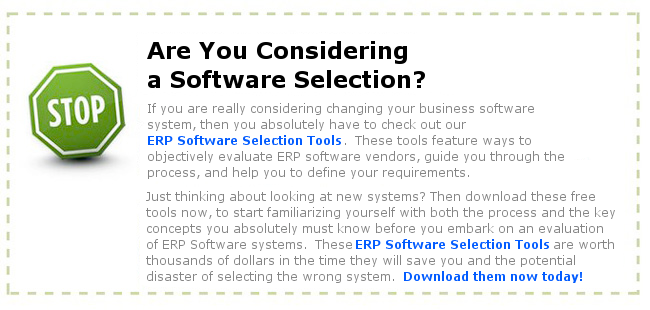Software Implementation Projects And Six Sigma
Tony Jacowski
Six Sigma concepts were originally developed for use in the manufacturing sector, but are now increasingly being used in the services sector as well. Use of Six Sigma concepts in the software industry has become quite common, but what many people do not know is that Six Sigma concepts can also be used in software implementation. People who have experience in software implementation projects know that such projects often do not take off as planned and may be subjected to schedule overruns and recurring problems. This is why many software companies opt for employing Six Sigma concepts during the process of software implementation at a clients site.
Common Implementation Problems
The two most common problems faced during software implementation projects include customer requirement problems and schedule estimation problems. By employing Six Sigma concepts in software implementation projects, professionals can better understand the needs and business objectives of the client. This way, they can make sure that the software implementation project is successfully completed within the stipulated timeframe. Employing Six Sigma will also ensure that no additional costs are incurred during the implementation process.
Understanding Client Requirements
Software products are normally designed for increasing the efficiency of a business process in accordance with the goals and objectives of the client. Most of the problems related to the software arise during the implementation stage when the client finds out that the software is unable to achieve desired objectives. This situation arises when the client passes vague information about requirements to software developers or when developers are unable to clearly comprehend client requirements.
Six Sigma helps in avoiding problems during the software implementation stage by bridging the gap between actual requirements of the client and what is eventually understood by software developers. Many people believe that Six Sigma is only limited to the use of statistical methods. What they do not know is that Six Sigma follows a disciplined approach that can solve any type of problem, whether it is quantitative or qualitative. This is evident from software companies that have successfully employed Six Sigma concepts in solving qualitative problems that arise during software implementation projects.
Generating Schedule Estimates
Schedule estimation is another common problem faced during software implementation. Mistakes in schedule estimation can affect the outcome of an implementation project; as such projects are often required to be completed in a specific timeframe and within available budgets. Implementation projects are often delayed because planners make the implementation schedule without considering indirect factors that might affect the project. Planners often fail to foresee that implementation can get affected due to the size of the software, location where it is being implemented, internal politics, authority, and governance.
Employing Six Sigma concepts in preparing schedule estimations will help planners to effectively include all these factors which may indirectly affect software implementation projects. Based on the past records of the client, Six Sigma statistical tools will generate an efficiency chart, which provides details about all types of problems faced with the client during software implementation projects. The chart displays the time taken to resolve such problems and techniques that were employed to solve such problems.
The chart also displays any additional time or costs that went into the completion of the project. Planners can use the information given in the chart for giving due consideration to all the indirect factors that can affect software implementations. This will help in generating true schedule estimates, necessary for the success of software implementation projects.
Tony Jacowski is a quality analyst for The MBA Journal. Aveta Solutions Six Sigma Online offers online six sigma training and certification classes for lean six sigma, black belts, green belts, and yellow belts.
